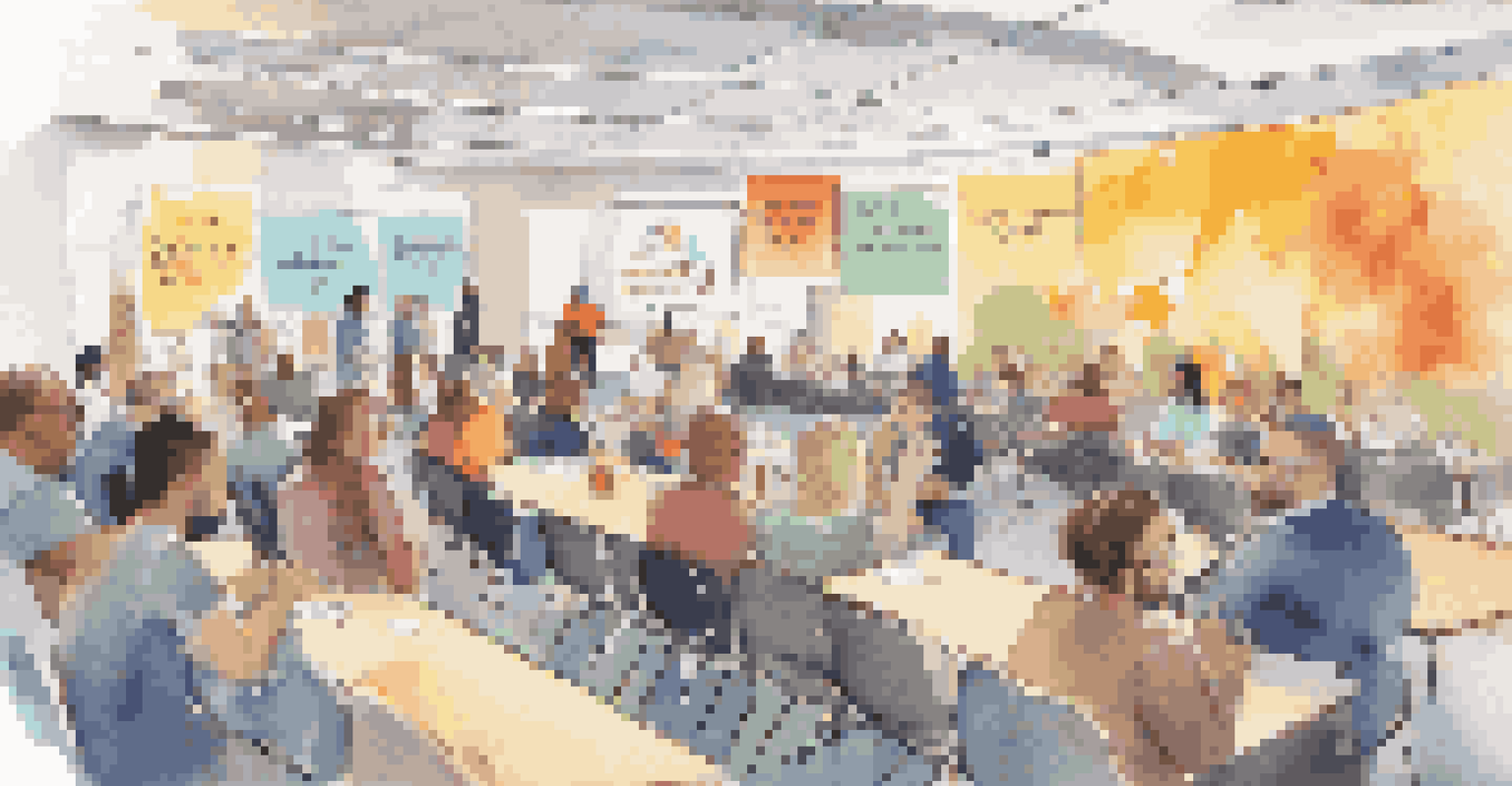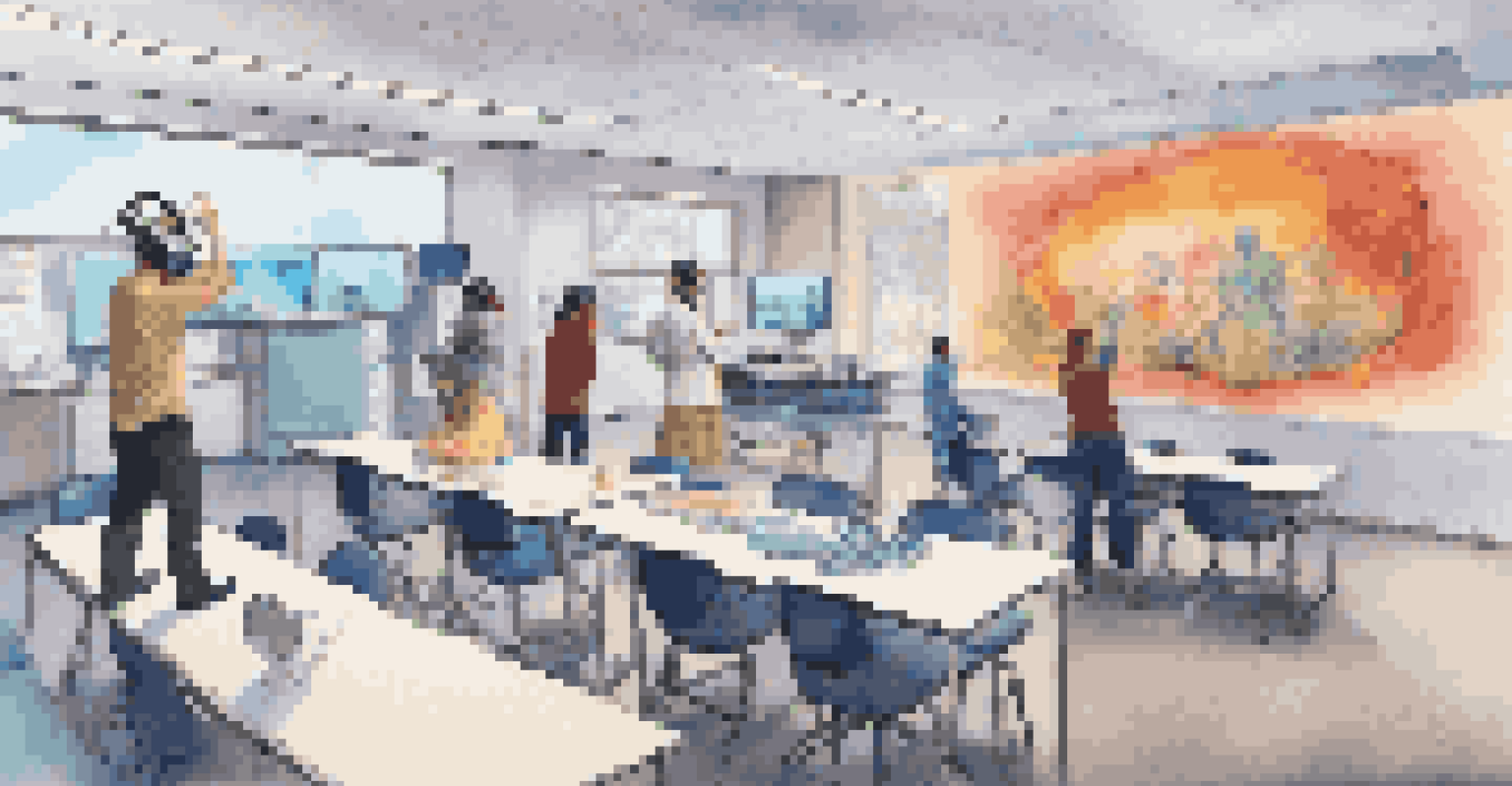Integrating Real-World Experiences in Education for Careers

The Importance of Real-World Learning in Education
Real-world learning bridges the gap between theoretical knowledge and practical application. It allows students to see how their studies translate into real-life scenarios and career opportunities. By engaging with real-world experiences, students can develop essential skills that are often not taught in traditional classrooms, such as critical thinking and problem-solving.
Tell me and I forget. Teach me and I remember. Involve me and I learn.
Moreover, real-world learning fosters a deeper understanding of subjects by placing them in a context that students can relate to. For instance, a science lesson about ecosystems can be enriched by a field trip to a local nature reserve. This hands-on approach makes learning memorable and meaningful, encouraging students to take ownership of their education.
Incorporating real-world experiences ensures that education remains relevant in a rapidly changing job market. As industries evolve, the skills required also change, and experiential learning helps students adapt accordingly. This alignment of education with industry needs is crucial for preparing students for successful careers.
Examples of Real-World Experience Integration
Internships and apprenticeships are prime examples of how education can integrate real-world experiences. These opportunities allow students to work alongside professionals, gaining firsthand knowledge of their chosen fields. For instance, a student interested in graphic design might intern at a local advertising agency, learning valuable skills while contributing to real projects.

Project-based learning is another effective method to incorporate real-world experiences. This approach engages students in projects that address real problems or challenges within their communities. For example, students might collaborate with local businesses to develop marketing strategies, providing them with practical experience while benefiting the community.
Real-World Learning Enhances Skills
Experiential learning bridges theory and practice, equipping students with critical thinking and problem-solving skills.
Moreover, partnerships between educational institutions and local organizations can create rich learning experiences. Schools can work with nonprofits or businesses to offer students workshops, guest lectures, and site visits. This not only enhances the curriculum but also strengthens community ties and expands students' professional networks.
Benefits of Experiential Learning for Students
Experiential learning offers numerous benefits for students, primarily by enhancing engagement and motivation. When students participate in hands-on activities, they often find learning more enjoyable and rewarding. This increased engagement can lead to better retention of information and a greater willingness to explore new topics.
The only source of knowledge is experience.
Additionally, real-world experiences help students develop soft skills that are essential in any career. Skills such as teamwork, communication, and adaptability are cultivated in settings where collaboration and problem-solving are required. For instance, working on a group project to solve a community issue fosters teamwork and teaches students how to communicate effectively with diverse individuals.
Furthermore, experiential learning can boost students’ confidence as they take on real challenges. Successfully completing a project or internship not only gives students a sense of accomplishment but also prepares them for future workplace scenarios. This confidence can be a game-changer as they transition from education to employment.
Challenges in Implementing Real-World Experiences
While integrating real-world experiences into education is beneficial, it also comes with challenges. One significant hurdle is the lack of resources or partnerships available to schools. Many educators want to provide experiential learning opportunities but may struggle to find local businesses or organizations willing to collaborate.
Another challenge is balancing curriculum requirements with real-world engagement. Teachers often face pressure to cover specific content within a limited timeframe, making it difficult to incorporate experiential learning. Finding a way to align these experiences with educational standards requires creativity and careful planning.
Partnerships Enrich Educational Experiences
Collaborations between schools and local organizations provide students access to valuable resources and real-world insights.
Finally, educators may encounter resistance from students who are accustomed to traditional learning methods. Some students may feel overwhelmed by the unpredictability of real-world experiences, preferring the structure of a conventional classroom. Overcoming this resistance involves fostering a growth mindset and demonstrating the value of experiential learning.
The Role of Technology in Enhancing Experiences
Technology plays a crucial role in facilitating real-world experiences in education. Online platforms can connect students with professionals across various industries, providing virtual internships and mentorship opportunities. For instance, students can participate in webinars or online workshops led by experts, broadening their horizons without geographical limitations.
Moreover, technology enables the simulation of real-world scenarios in a controlled environment. Virtual reality (VR) and augmented reality (AR) can create immersive experiences that allow students to practice skills in a safe setting. For example, medical students can use VR to perform virtual surgeries, gaining hands-on experience without the risks associated with real patients.
Additionally, technology can enhance project-based learning by providing students with access to tools and resources. Collaborative platforms allow students to work together on projects, even from different locations. This not only teaches them how to collaborate in a digital age but also prepares them for a future where remote work is increasingly common.
Developing Partnerships for Successful Integration
Building partnerships between educational institutions and community organizations is vital for successful integration of real-world experiences. These collaborations can provide students with access to resources, expertise, and opportunities that enhance their learning. Schools can reach out to local businesses, nonprofits, and government agencies to create programs that benefit both students and the community.
Networking events and career fairs are excellent ways to connect educators with industry professionals. These events can facilitate discussions about potential partnerships and highlight the importance of experiential learning. Additionally, schools can invite guest speakers from various fields to inspire students and provide insights into their careers.
Technology Facilitates Learning Opportunities
Online platforms and virtual simulations expand access to real-world experiences, preparing students for modern work environments.
Moreover, involving parents and alumni in the process can strengthen community ties and create a support system for students. Parents with professional experience can offer valuable mentorship, while alumni can share their journeys and provide networking opportunities. This collective effort can significantly enrich the educational experience and prepare students for their future careers.
Measuring the Impact of Real-World Learning
Assessing the effectiveness of real-world learning experiences is essential for continuous improvement. Educators can collect feedback from students to understand their perceptions of these experiences and their impact on learning. Surveys and reflection activities can help gauge student engagement, confidence, and skill development.
Additionally, tracking students' career outcomes can provide valuable data on the long-term benefits of experiential learning. Schools can follow up with graduates to see how their real-world experiences influenced their career choices and success. This information can help refine programs and demonstrate the value of integrating real-world experiences in education.

Finally, educators can share success stories and case studies with stakeholders to advocate for the importance of real-world learning. By highlighting the positive outcomes of these experiences, schools can garner support from administrators, parents, and the community. This advocacy is crucial for sustaining and expanding real-world learning initiatives in education.